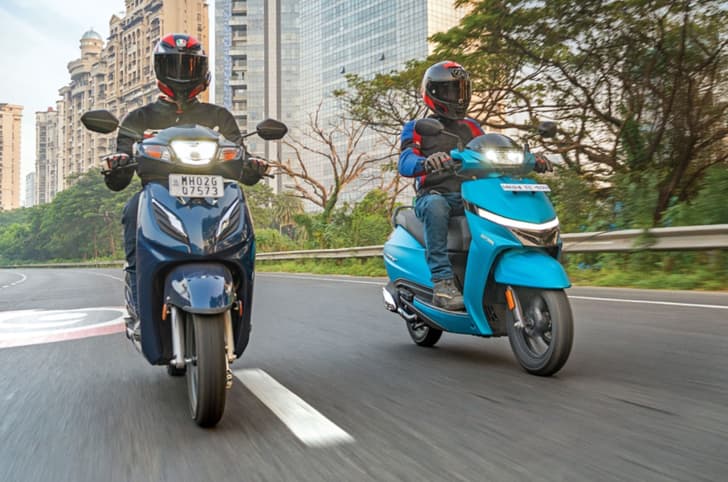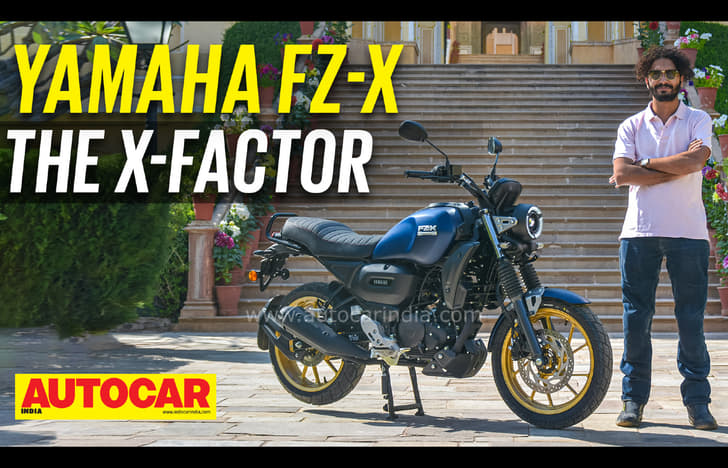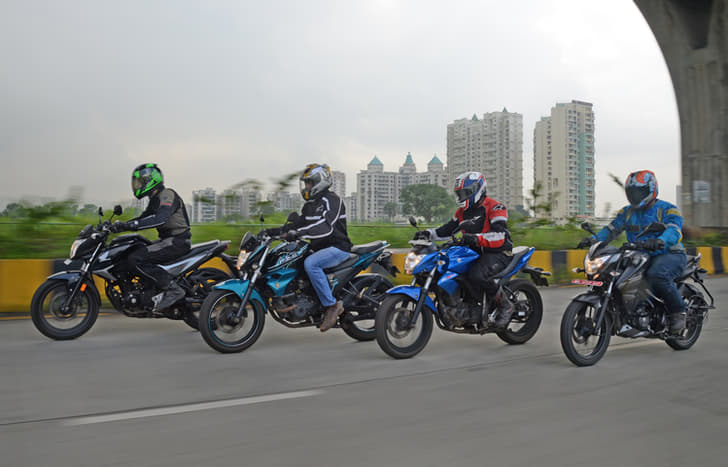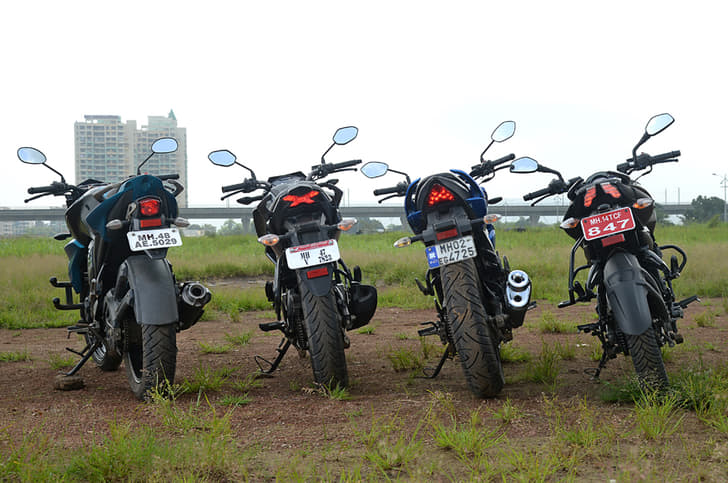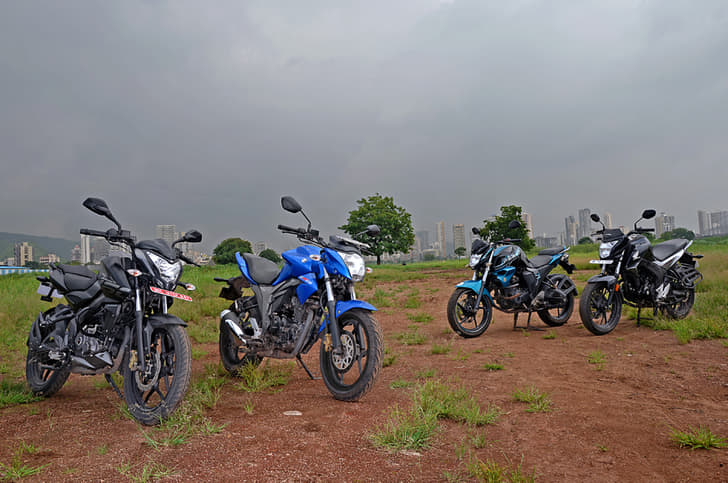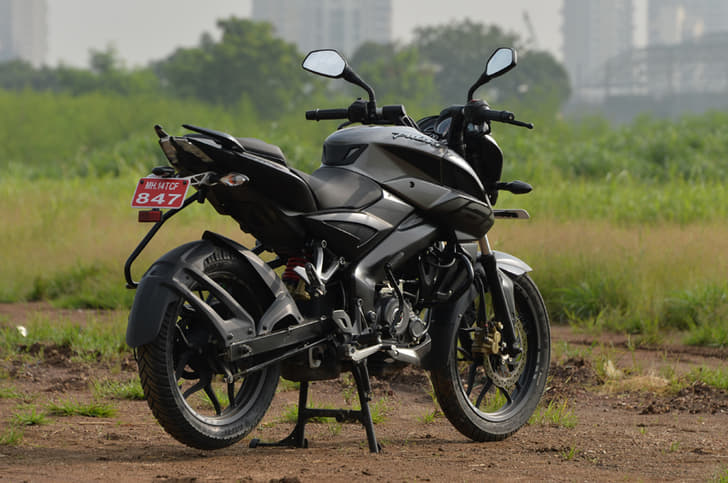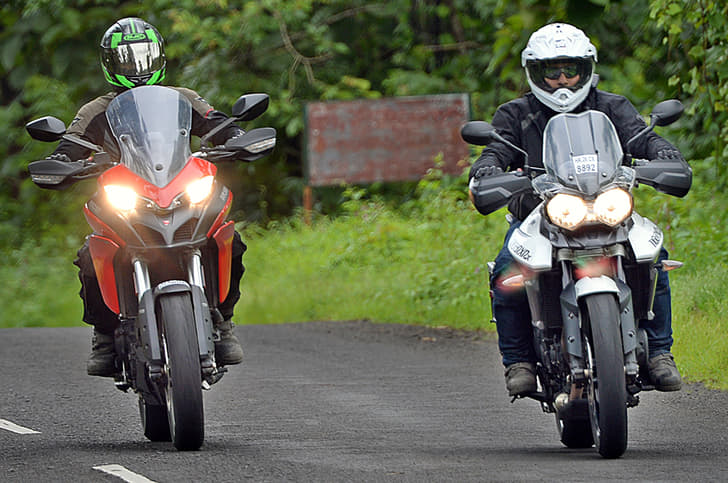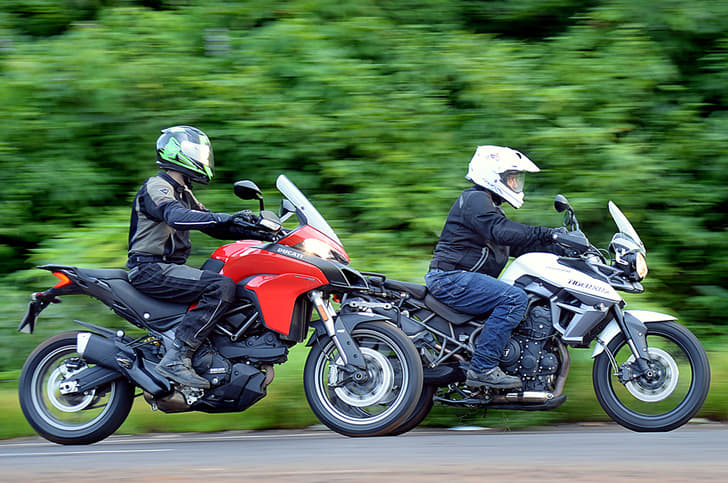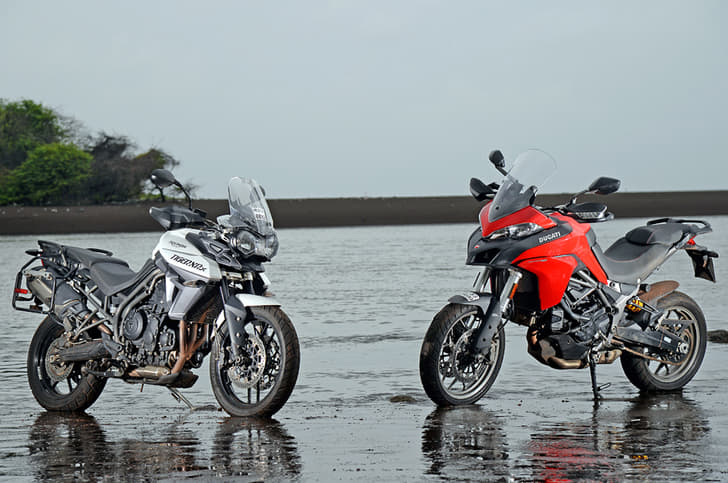Let’s cut to the chase. Rishaad, astride the RC 390, is a corner ahead. I’m on the RR 310, clearly slower, and there’s nothing to suggest I can catch up – but that’s more down to me than just the bike. The gap opens up further but, in an unexpected development, I’m not sulking. I’m still having a load of fun, and that’s what's more important, right? To let you in on this premise is fundamental because there are, grossly, two kinds of sport-riders out there –those who want to ride fast and those who can ride fast. Pardon the suggestively divisive nature of this belief, but it’s crucial to pick a side; motorcycles such as these are potentially life-altering in more ways than you can imagine.
Here’s some context to the above disclaimer. In 2014, basking in the aura of the happily hyper 390 Duke, KTM decided the Indian enthusiast was ready to handle a world-class entry-level supersport machine with gobs of power and an aggressive, tunnel vision approach to performance. Many were lured into its edgy styling and effortlessly superior performance (even international twin-cylinder entries couldn’t outdo it – and still can’t!). In 2017, with a substantial update that added a phenomenal front brake, ride-by-wire, more pliant suspension and mildly reworked styling to the already infallible package, the RC 390 emerged as a near-perfect motorcycle to go tearing up the race track with. Except, very few of us live anywhere reasonably close to a racetrack. And not all of us who do can really make it there every Sunday. Or even every month, or six, for that matter.
TVS had an ear to the street all this while, evidently. And the result of its silent observation is the Apache RR 310. On the outset, let’s state the obvious truths you and I are already aware of. The RR 310 has the smaller engine, produces the lesser impressive output figures, is slower – noticeably, but not disappointingly – and also happens to wear the lighter price tag of the two motorcycles you see here. Since these are enthusiasts’ motorcycles, the verdict is already clear, right? Or is it? Speed is of the essence with bikes like these but, unlike in a video game, these are motorcycles you (or the stronger influence in your family) actually have to pay for. You will, perhaps, not have the liberty of a second motorcycle and will, therefore, have to ride one every day. Their appeal has to exceed the tenure of the EMIs, it goes without saying. Having settled the context (a bit lengthily, I admit and apologise!), let’s go into a few crucial questions to determine which of these is the motorcycle you should be talking to your parents/partner/bank manager (tick whichever applicable) about.
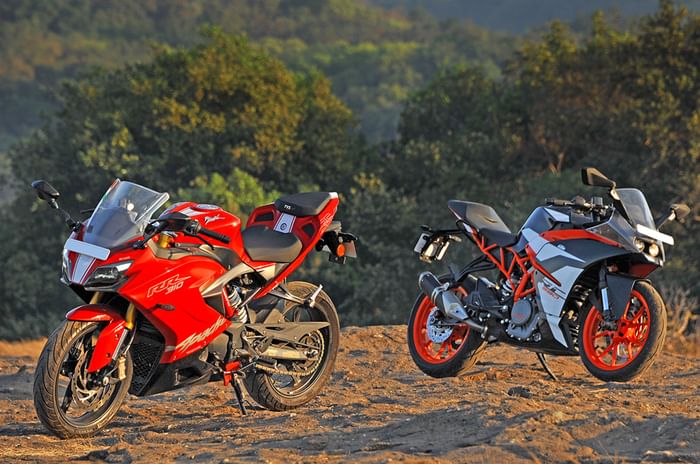
WHICH IS FANCIER?
Based on the features list, the KTM is. It has ride-by-wire, a slipper clutch, more expensive Metzeler rubber, a 320mm front disc, a WP 43mm USD fork, and switchable ABS. The RR 310 gets credible (but less impressive) Michelin rubber, a 300mm petal disc, a KYB 41mm USD fork and an ABS you cannot disconnect. Projector headlights are common to both (the TVS gets a Bi-LED unit), however, and both also feature a trellis frame, a pre-load adjustable monoshock, snazzy alloy wheels, fully digital instrument clusters and clip-on handlebars. The RR 310 does have a slight edge, owing to being a more recent product, in its execution. Visually, and to the touch, the TVS is the better finished motorcycle. There’s less visible wiring and plumbing visible on the RR, and the detailing – be it the textures or the welds – is better on it as well. The RC 390 is not disappointing in any way, but the RR 310 is just better in the finer details. The steering triple-clamp, for one, is gorgeously designed unit that looks and feels far more expensive than the KTM’s relatively simplistic-looking matte-black unit. And then you have the BMW-sourced switchgear on the TVS, which is unlike anything we’ve seen on motorcycles even twice as expensive. While styling on the whole is a subjective matter, it’s the TVS that looks pretty in a traditionalist sense; the KTM’s sharp lines simply spell unabashed aggression. The TVS will also be highly appreciated for looking like a big bike. Take the names and badges off and you'd swear the red bike is the bigger and more powerful machine.
| Dimensions | ||
|---|---|---|
| TVS Apache RR 310 | KTM RC 390 | |
| Wheelbase | 1365mm | 1340mm |
| Seat height | 810mm | 820mm |
| Weight | 169.5kg | 170kg |
| Brake (f/r) | 300mm disc/240mm disc | 320mm disc/230mm disc |
| Suspension (f/r) | 41mm KYB USD fork/Preload-adjustable monoshock, ABS | 43mm WP USD fork/WP shock absorber, ABS |
| Tyres (f/r) | 110/70 R17/150/60 R17 | 110/70 ZR 17/150/60 ZR 17 |
| Fuel tank | 11 litres | 10 litres |
WHICH IS COMFIER?
The RC 390 has never been a comfortable motorcycle unless it's being ridden incredibly fast. Then, its committed riding position, with your arms outstretched and legs folded into an acute angle, makes absolute sense. It has the harder seat of the two bikes here, although its pillion seat (which is the entire tail section of the motorcycle, to be fair) is plusher than the TVS’. The RC is also visibly slimmer and more compact in general, although there is a fair bit of room for you to move around and hang-off when needed. In comparison, the RR is far more comfortable. Despite what its profile suggests, the RR seats you more upright and while it doesn’t lack commitment, it’s not needlessly demanding either. The seat is comfy for even a long stint on the road and feels luxurious after you climb off the KTM.
Over a mixed riding cycle – including a fast highway blast, serious cornering and a city crawl – the RC, simply from a riding position point of view, is tough on your joints whereas the RR is substantially easier to ride. In the riding context, the RC is spot-on as a racetrack setup but it’s the RR’s comfortable setup that works better on the road, but cuts it just fine at the race track too, as we discovered in our first ride review. Interestingly, thanks to the RR’s comfort levels, I found myself naturally at ease doing high speeds (since my focus was reserved solely on the road ahead, rather than on an aching wrist) and this is where the aforementioned disclaimer at the start of the story starts to come into play – I want to ride fast, but I don’t have the comprehensive skill set to do so confidently. Should I go for the gradual, accommodating, educative motorcycle or compensate by picking the obviously faster one? How you answer this has a direct co-relation to which motorcycle you should pick.
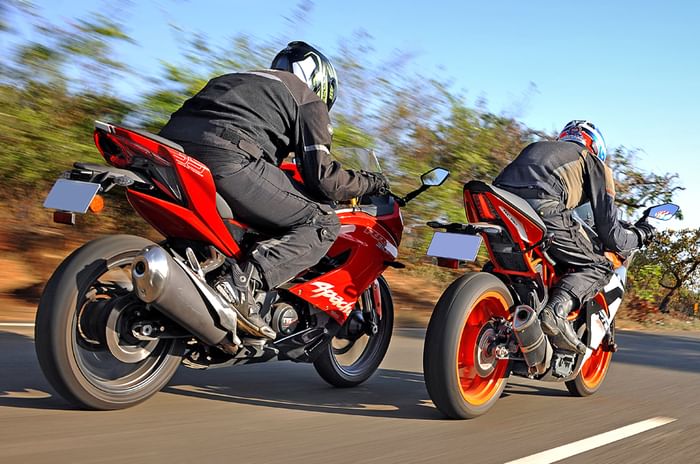
WHICH HAS MORE FIREPOWER?
Let’s pretend you and I don’t already know this. The RC 390 is the one. Its 373.2cc, DOHC, single-cylinder motor produces 43.5hp at 9,000rpm and 36Nm of torque at 7,000rpm. This is the most powerful motorcycle in its class anywhere in the world and it owes its dominance to these sacred figures. The RR 310 has a 312.2cc, DOHC, single-cylinder motor (sourced from the BMW G 310 R built in conjunction with TVS in India) which produces 34hp at 9,700 rpm and 27.3Nm at 7,700 rpm. These are impressive figures on their own but they fall heavily short of the KTM’s shocking credentials. Common to both is fuel-injection, of course, as well as a 6-speed gearbox.
That the RC 390 is faster is obvious; it goes from 0 to 60 kph in 2.7 seconds and 0 to 100 kph in a staggering 5.9 seconds. The RC’s performance never fails to excite (or even scare) and these numbers, paired with its crisp and immediate throttle response make it an absolute hoot to be a hooligan on. This is a persistently aggressive motorcycle which is remorseless in its mandate for speed and more speed. However, given its 10hp deficit, the RR 310 comes surprisingly close. It wraps up its dash to 60 kph in 2.9 seconds and to 100 kph in 6.9 seconds – this difference may place a some crucial impact in a drag race or around a racetrack, but not elsewhere. Overall, there is still no outdoing the KTM for manic thrills and the ability to get to some pretty high speeds by any standards, but while the TVS is slower, it is far from slow and offers some serious excitement of its own.
| Powertrain | ||
|---|---|---|
| TVS Apache RR 310 | KTM RC 390 | |
| Engine | 312.2cc, DOHC, single-cylinder | 373.2cc, DOHC, single-cylinder |
| Power | 34hp at 9700rpm | 43.5hp at 9000rpm |
| Torque | 27.3Nm at 7700rpm | 36Nm 7000rpm |
| Gearbox | 6-speed | 6-speed |
| 0-60kph | 2.9s | 2.7s |
| 0-100kph | 6.9s | 5.9s |
| Fuel efficiency (city/highway) | 33.1/37.8kpl | 25.9/37.3kpl |
WHICH IS MORE FUN IN THE TWISTIES?
With its 1,340mm wheelbase and an inherently fun chassis setup, the KTM is electric in its dynamic responses. The RC is a scalpel-sharp instrument which is always in the mood for fun – but it’s also something that demands and rewards a skilled and focused rider. Even an enviable exposure to bigger motorcycles (like in my case) may not necessarily season you enough to handle every nuance, every twitch that weaves the RC’s character together. In more confident, well-versed hands, the RC can put a superbike to shame on a tight section of road, but it demands that the rider knows exactly what they're on about. Adding to its serious agility are the mind-boggling brakes, which are tack sharp. The RR’s, meanwhile, are good but simply don’t offer the bite or the outright performance of the RC’s brakes.
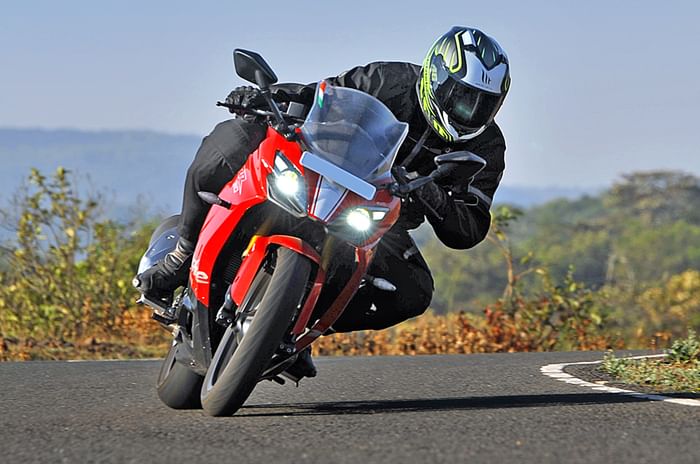
The RR 310 is calmer. Like a good teacher, it takes you up the learning curve, absorbs your flaws along the way and gently makes a better rider of you. While the RC 390 exposes all your impurities – even if just to yourself – the RR 310 compensates for your lack of ability by being less demanding and more progressive. Its longer, 1365mm wheelbase contributes to its stability and its pliant suspension takes kindly to unexpected mid-corner bumps; the RC is forgiving, too, but will have a twitch or two to display before it shoots off into the distance. It's still eager to change direction, quick to lean over to the edge of the tyre and proves to be just as fun on a mountain road as it was on the racetrack in Chennai. To summarise, the RC 390 is angrier, edgier and ultimately a whole lot more exciting, while the RR is the friendly, fun and indulgent machine that encourages you.
WHICH ONE IS EASIER TO LIVE WITH?
Without a doubt, the RR 310. It has a lot of things going for it, and the RC 390’s unapologetic focus further highlights the RR’s goodness. The RR is at home not just up the hills but also in the city and unlike most faired motorcycles we have in our midst today, it’s not something you’d mind going touring on as well. I, for one, am no longer fascinated by faired motorcycles the way I used to be once upon a time, but the RR 310’s practicality and versatility has proven infectious. It has the comfortable seating, the superbly pliant suspension and the rideability most of us just cannot do without despite being a racy, exciting machine – and that’s a hard balance to achieve in this format of motorcycle.
Also deserving of a noteworthy mention is the low-speed demeanour and tractability of its motor that makes it a breeze to ride even when you’re not in the mood for speed. It can, for instance, go as low as 45 kph in 6th gear (and accelerate with linearity from that point onwards) whereas the RC 390 will do the same but in nothing higher than 4th! The same applies to the lower gears and the RC demands constant gear changes where the RR lets you potter around in higher gears without a complaint. This has implications on the RR’s fuel-efficiency as well, helping it achieve an impressive 33.1 kpl in the city – the RC 390 manages 25.9 kpl. On the highway, this disparity is narrowed down to a sliver, however, with the RR managing 37.8 kpl and the RC delivering an equally impressive 37.3 kpl; the larger-engined KTM is relatively less stressed at sustained high speeds, which should explain it. And finally, it's worth mentioning the the RC runs uncomfortably hot in traffic, while the RR does an admirable job with heat management; it's gets pretty warm too, but nowhere near as bad. The RC is the smoother of the two bikes, but both aren’t particularly refined either, with either emitting vibrations from the handlebar, seat and pegs at certain points in their powerband.

WHICH IS THE ONE FOR YOU, THEN?
This brings us back to where we began – it depends solely on who you are. If you are a seasoned/aspiring racetrack regular or live next door to fabulous mountain roads with no everyday road-riding commitments, the RC 390, priced at Rs 2.35 lakh (ex-showroom, Mumbai), is the only motorcycle you should consider right now. If, however, you form the majority of enthusiasts whose Sunday steeds also double up as weekday workhorses, the Apache RR 310, priced at Rs 2.05 lakh (ex-showroom, Mumbai) is the motorcycle you should bring up on the dinner table tonight. This holds especially true if you're graduating from a typical sub-200cc motorcycle.
To sum up then, the RR takes this win not because it offers better value (in fact it’s the KTM that offers better value from a kit and performance perspective) or even because it is so friendly to ride. Ultimately, it comes down to the KTM's stubborn, single minded focus on just one thing - speed. All else is secondary on the 390 and this deep focus will surely appeal strongly to a few. However, the RR shines bright in so many more aspects and it never fails to put a smile on your face. And that’s hard to resist in a performance motorcycle, one that’s designed keeping purely an Indian environment in mind.





